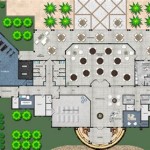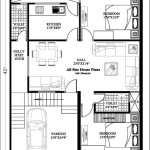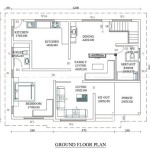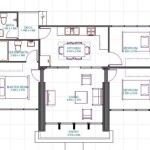Greek Revival House Floor Plans: A Guide to Classic Design
The Greek Revival architectural style, popular in the United States from the 1820s to the 1850s, is characterized by its simple yet elegant design inspired by ancient Greek architecture. Greek Revival houses are easily recognizable by their symmetrical facades, columned porticos, and pediments. Beyond their exterior charm, these houses offer functional and well-designed floor plans, emphasizing practicality and spaciousness.
Understanding the typical features of a Greek Revival house floor plan can provide valuable insights for homeowners considering renovating or building such a home. This article explores the defining elements of these floor plans, highlighting their key components and design principles.
Key Features of Greek Revival House Floor Plans
Greek Revival house floor plans are designed with practicality and functionality in mind. They typically feature a central hallway that divides the house into symmetrical halves. The most prominent rooms, such as the parlor and dining room, are located on either side of the hallway and often boast large windows for natural light. Other common features include:
- Central Hallway: This serves as the primary circulation space, providing access to the main rooms on the first floor.
- Formal Rooms: The parlor and dining room were designed for entertaining guests and showcasing the family's wealth and social status. These rooms were typically large and well-lit.
- Bedrooms: Bedrooms were usually located on the second floor, away from the main living areas, offering privacy and quiet.
- Kitchen: Kitchens were traditionally placed in the back of the house, often with a separate entrance for the servants.
Floor Plan Variations
While Greek Revival houses often adhered to a standard layout, there were variations in their floor plans depending on the size, budget, and specific needs of the homeowner. Smaller houses might have fewer rooms or lack a formal dining room, while larger houses often featured multiple bedrooms, separate living areas, and even an upstairs parlor or library.
One common variation involved the placement of the kitchen. In some houses, the kitchen was located on the first floor, adjacent to the dining room, while others retained the traditional separate kitchen space in the rear of the house. This shift reflected changing societal norms and the increasing emphasis on domesticity and family life.
Design Principles
The design principles behind Greek Revival house floor plans were guided by the ideals of classical architecture and emphasized order, proportion, and balance. The symmetrical layout and the use of formal rooms reflected a desire for elegance and a sense of formality.
The emphasis on natural light and open spaces contributed to a spacious and airy atmosphere. These houses were designed to be comfortable and functional, accommodating the needs of a growing middle class in the early 19th century.
The use of intricate moldings, decorative details, and high ceilings further contributed to the overall grandeur and elegance of Greek Revival house floor plans. These elements helped to elevate these houses from mere dwellings to statements of status and taste, reflecting the aspirations of the era.
Greek Revival Colonial House Plans
House Plan 98264 Greek Revival Style With 8210 Sq Ft 6 Bed
Greek Revival House Plans For A Colonial Style 4 Bedroom
Greek Revival House Plans For A Colonial Style 4 Bedroom
Greek Revival Colonial House Plans
Our Classic Greek Revival Skip Tuminello Southern Living House Plans Farmhouse Floor
Greek Revival Home Plan 81037w Architectural Designs House Plans
Greek Revival And Gardens Period Homes
Best Remodel 2024 A Greek Revival Is Born Again Fine Homebuilding
House Plan 98256 Greek Revival Style With 9581 Sq Ft 5 Bed 6








